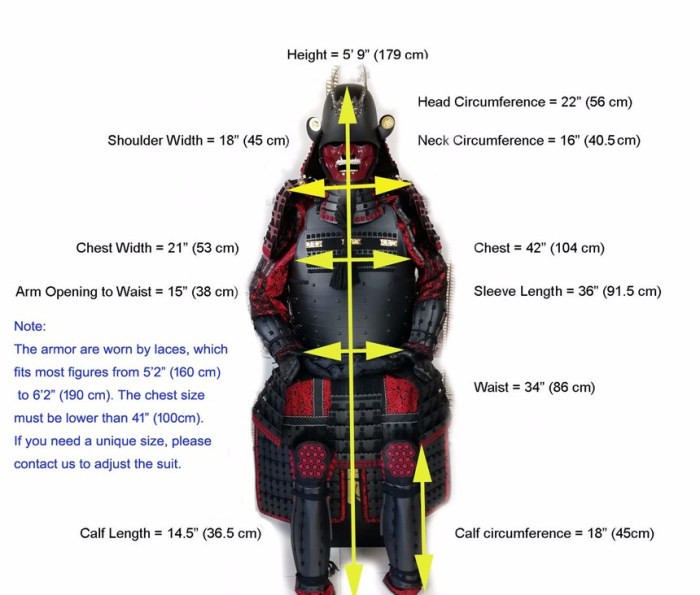Parts of armor suit – Delve into the fascinating world of armor suits, where each component plays a pivotal role in protection, mobility, and cultural significance. From the iconic helmet to the sturdy boots, discover the intricate details and captivating stories behind these protective garments.
Throughout history, armor suits have evolved alongside human ingenuity, showcasing diverse designs, materials, and craftsmanship. Join us on a journey to explore the parts of armor suits, unraveling their historical significance and cultural impact.
Parts of Armor Suit

An armor suit, a protective covering worn by warriors and knights throughout history, is composed of various components designed to shield the wearer from harm and enhance their combat abilities. Each part of the suit plays a crucial role in providing protection, mobility, and aesthetic appeal.
Helmet
The helmet, a vital part of the armor, protects the head and face from blows, arrows, and other projectiles. Different types of helmets have been used throughout history, each with its unique design and construction.
- Spangenhelm:A helmet with a nasal guard and cheek pieces, commonly used in medieval Europe.
- Sallet:A helmet with a rounded skull and visor, popular during the 15th century.
- Bascinet:A helmet with a pointed skull and a visor that could be raised or lowered.
Chest Plate
The chest plate, also known as a cuirass, protects the chest and abdomen from piercing and blunt force attacks. It comes in various styles and designs, offering different levels of protection and mobility.
- Plate Cuirass:A solid piece of metal covering the chest, providing maximum protection.
- Laminated Cuirass:Made of overlapping metal plates, offering flexibility and some protection.
- Brigandine:A flexible armor made of small metal plates sewn onto a fabric or leather backing.
Gauntlets, Parts of armor suit
Gauntlets, protective coverings for the hands, provide protection while allowing for dexterity and weapon handling. They are constructed using various materials and techniques.
- Mitten Gauntlets:Cover the entire hand, providing maximum protection but limiting dexterity.
- Articulated Gauntlets:Allow for greater finger movement and dexterity.
- Gauntlet of Plate:Made of metal plates, offering superior protection.
Leg Armor
Leg armor protects the legs and thighs from blows and projectiles, allowing for mobility and flexibility.
- Greaves:Shin guards that cover the front of the legs.
- Cuisses:Thigh guards that protect the upper legs.
- Poleyns:Knee guards that protect the knees.
Boots
Armor boots protect the feet and ankles from injuries and provide traction on various terrains. They are made of different materials and styles.
- Sabatons:Plate armor boots that provide maximum protection.
- Poulaines:Long-toed boots that were popular during the 14th and 15th centuries.
- Jackboots:Leather boots that provide flexibility and comfort.
Additional Components
In addition to the main components, armor suits often include other elements that enhance protection and aesthetics.
- Gorget:A neck guard that protects the throat.
- Pauldrons:Shoulder guards that provide protection and a place to attach other armor.
- Vambraces:Arm guards that protect the forearms.
Materials and Construction
Armor suits are constructed using various materials and techniques, each with its own advantages and disadvantages.
- Metal:Steel, iron, and other metals provide superior protection but can be heavy and expensive.
- Leather:Flexible and lightweight, but less protective than metal.
- Textiles:Used for padding and lining, providing comfort and shock absorption.
Historical and Cultural Significance
Armor suits have played a significant role in warfare and culture throughout history.
- Ancient Greece:Hoplites wore bronze armor, including helmets, chest plates, and greaves.
- Medieval Europe:Knights wore full suits of plate armor, providing unparalleled protection.
- Samurai Japan:Samurai warriors wore elaborate armor made of lacquered iron and leather.
Answers to Common Questions
What was the primary purpose of armor suits?
Armor suits were primarily designed to protect the wearer from physical harm during combat or other hazardous situations.
What materials were commonly used in the construction of armor suits?
Various materials were used, including metal (such as iron, steel, or bronze), leather, and textiles.
How did armor suits evolve over time?
Armor suits underwent significant evolution, influenced by technological advancements, cultural preferences, and the changing nature of warfare.


